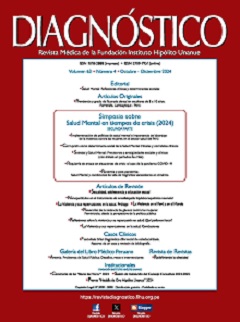Nanoparticles in the treatment of neonatal hypoxic ischemic encephalopathy
DOI:
https://doi.org/10.33734/diagnostico.v63i4.549Keywords:
Hypoxia-Ischemia, Brain, nanoparticles, nanomedicine, dendrimersAbstract
Neonatal encephalopathy (HIE) is a clinical syndrome of neurological dysfunction, with symptoms ranging from mild irritability to coma and seizures, contributing significantly to global disability. In developed countries, it occurs in 2-3 per 1000 full-term births, with higher incidence in low- and middle-income regions. The primary treatment is hypothermia, although it only improves outcomes in 50% of cases. Recent studies focus on alternative therapeutic options such as nanomedicine to address oxidative stress, mitochondrial failure, excitotoxicity, and apoptosis associated with HIE. Nanotechnology offers promising advances in neurological treatments, including improved drug delivery across the blood-brain barrier and increased bioavailability. This review explores several nanomedicine-based therapies, such as nanoparticles loaded with dendrimer-based catalase inhibitors and melatonin nanoformulations, which show significant neuroprotective potential in animal models of neonatal brain injury. These therapies aim to improve the effectiveness of treatment for HIE, addressing the limitations of current treatments and providing approaches for an effective treatment in the future within everyone's reach.
Downloads
Metrics
Downloads
Published
How to Cite
Issue
Section
License
Copyright (c) 2024 Etsa Robinson Tsenkush Chamik, Jennyfer Fernanda Gavilanes Ramon

This work is licensed under a Creative Commons Attribution 4.0 International License.


























